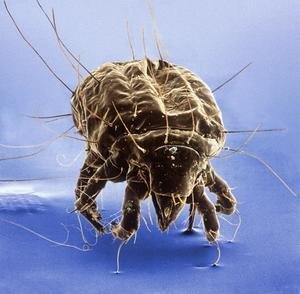 Hello Ani-freaks
Hello Ani-freaksThose among you who know me well know that when Sleater Kinney ( US , post-riot-grrl, bassless, les-rock trio) does something, I tend to follow. So when they announced earlier this year they'd be on indefinite hiatus, I saw the future of Animal of the Week. But whereas their's is an indefinite hiatus of probably forever, mine is an indefinite hiatus of 2, 3, maybe 4 weeks, just while I realign my life. So, don't consider this my farewell tour...more of an "au revoir mailout".
And just as this onset of the inter-regnum of AOTW will likely be recorded as a legendary event in the history books, so this week's animal of the week marks a remarkable occurrence, a good omen for all the nations of the world. For this week's Animal is the male white bison born a few weeks back on the Heiders' farm in Wisconsin, USA. In several First Nations religions, typically those of plains tribes, white bison are sacred and considered to have mystical, magical, and healing properties. Lakota Sioux legend has it that PtsanWi (White Buffalo Calf Woman) appeared to two scouts sent to look for food in a time of famine, although she seemed to be a beautiful young woman clad in white, she was really a white buffalo in disguise. One scout tried to embrace her, she turned him into a pile of bones, the other tried to shoot her, but she told him "Don't even bovver me wiv your arrows, I'm a god innit", and then she went and helped out the tribe, gave them some scran, smoked a peace pipe, and taught them music and rituals. Which just goes to show that it's better to threaten a god than to get amorous with one. In another legend, a male white buffalo will be born that will reunite all the nations of the world, turning from white, to red, to yellow, to black, and to brown representing the races of people. Seems like this bull calf is right on time, eh?
This is the third white bison to be born on the Heiders' farm since 1994; the meaning of this birth for many people is quite profound. For cynics, it is a sign that the Heiders' bison have interbred with European cattle.
The American bison (Bison bison) was once the most
 numerous large mammal species in the world, there were about 100 million of them roaming the prairies and forests of North America in the middle of the 19th century. However, they became an enemy of "progress" for the USA, not only could the massive herds obstruct construction of railways and hold up trains for weeks, but also the Native Americans—who relied on the bison for clothing, food, tools, and housing—could be killed, weakened, and dispossessed by eradicating the bison. At the height of the slaughter (right year, right season), European American hunters may have been killing as many as 100 000 animals per day. Don’t believe me? Check out the pile-of-skulls picture! “ Buffalo ” Bill Cody was said to have killed 100 animals in one session, and one hunter claimed that in his years as a professional he had shot 20 000 bison. By 1890, there were just 200 or so animals—that's 99 999 800 animals killed in about 50 years! Presently there are about 350 000 bison. Only a few hundred purebred animals exist, and the only continuously wild population of purebred bison lives in Yellowstone Park . Between 1978 and 1992, bison caused more injuries or deaths than bears did in Yellowstone (56 vs 12), rates of pickernick-basket theft are not reported.
numerous large mammal species in the world, there were about 100 million of them roaming the prairies and forests of North America in the middle of the 19th century. However, they became an enemy of "progress" for the USA, not only could the massive herds obstruct construction of railways and hold up trains for weeks, but also the Native Americans—who relied on the bison for clothing, food, tools, and housing—could be killed, weakened, and dispossessed by eradicating the bison. At the height of the slaughter (right year, right season), European American hunters may have been killing as many as 100 000 animals per day. Don’t believe me? Check out the pile-of-skulls picture! “ Buffalo ” Bill Cody was said to have killed 100 animals in one session, and one hunter claimed that in his years as a professional he had shot 20 000 bison. By 1890, there were just 200 or so animals—that's 99 999 800 animals killed in about 50 years! Presently there are about 350 000 bison. Only a few hundred purebred animals exist, and the only continuously wild population of purebred bison lives in Yellowstone Park . Between 1978 and 1992, bison caused more injuries or deaths than bears did in Yellowstone (56 vs 12), rates of pickernick-basket theft are not reported.Since the birth of the third white calf on the Heiders' farm, Native Americans have been making donations of tobacco and dream catchers at the Heiders' farm and have been holding drumming vigils to honour the auspicious arrival. Bunch of tree-huggers! Visit Heiders' farm shop for all your cigarette and dream catcher needs.

